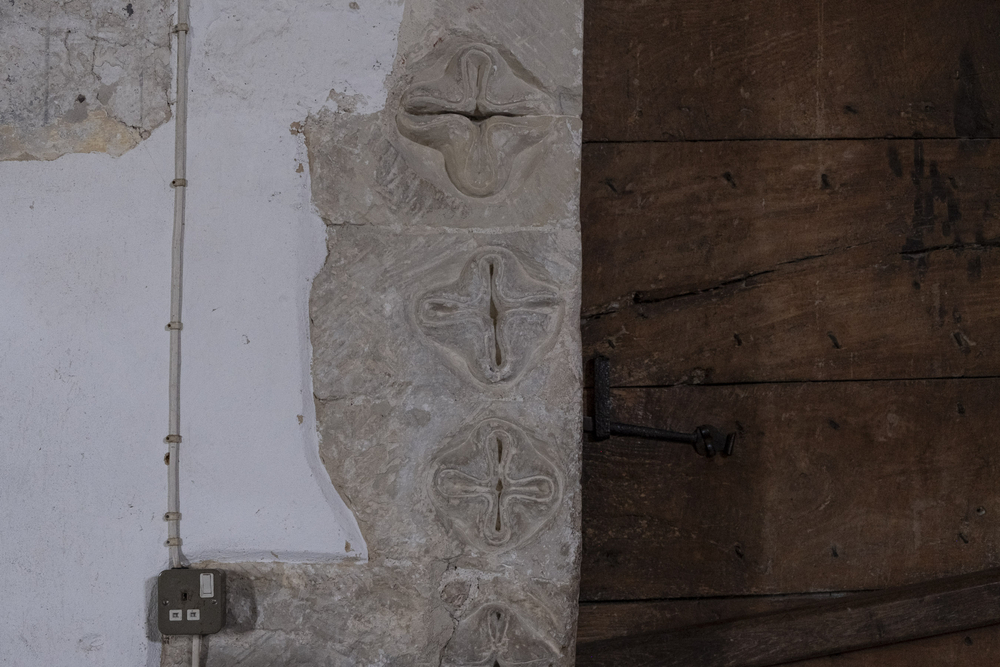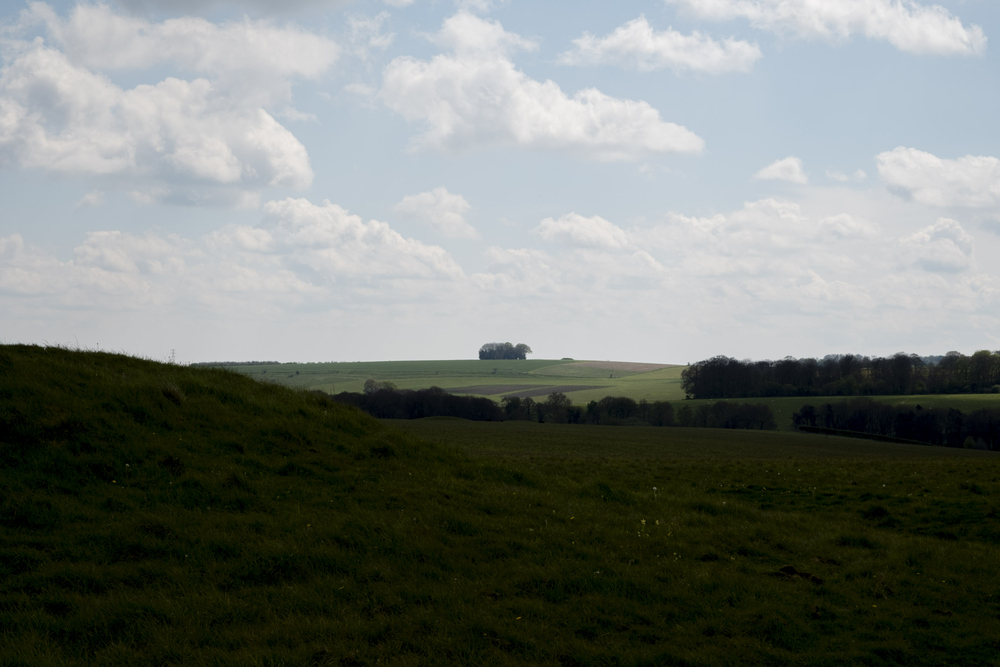Sunday service
This piece was written for my Substack newsletter Severnland. Read more here and sign up if you like similar intermittent ramblings junking up your inbox.
I was supposed to be walking the Ridgeway today. Part two – a 24 miler. But factors conspired against: The forecast, unexpected new boots that haven’t been worn in. And the beginnings of a cold. Yesterday morning as these conspiring factors coalesced I happened to read about St Andrew’s church in Great Durnford, Wiltshire and decided I’d go see that instead and find a circular route to walk nearby. Something shorter.
Great Durnford is ensconced in the Woodford Valley alongside the river Avon. It’s all thatch, immaculate brick work and lime render, SUVs on pebbled drives. Wisteria. In the museum of Great Durnford, St. Andrews is a perfect specimen; both flint cobbled and cobbled together. Old and sunken. Accepted into the earth as one of its own. Everlasting. It’s so beautiful that there’s even a model of the church inside the church. A miniature Narcissus staring out at his larger self. But who’s surprised at this self love? Look around. 700 year old benches that I touch solemnly imagining all the previous hands and bums. A font that’s been in continuous use for 900 years. A fact that – like staring into the night sky – is something I can’t really make sense of. It blows my miniature mind. I’m left with a feeling approximating disconnection which is somehow disappointing.
There are Norman doorways, window arches. Blocked in bits, hastily erected buttresses. A holy water stoup. The usual handwritten fundraising pleas and paraphernalia from pocket-money cashbox to tithe envelopes. I’ve seen all this before. From the flint built church of my childhood, to the heaving heavenly body of the Northern Virginia church I went to as a teen that turned out to be the last of the churches I serviced in regularly. As soon as I was given the choice to stop I did. Same with piano lessons. Although I’ve come back to both, I’m more of a church-as-historic-building interloper these days. My spirit does find some resonance in the silent spaces of rural churches, but old associations die hard: A stray, proselytising member of the local congregation will send me straight out the seventeenth century door.
I eat cheddar on buttered sourdough in the boot of the car and start off on the Sarsen Way, up the valley towards Amesbury. I am rewarded almost immediately with only the third hare of my life. Like regular journeymen of olde we come across each other at the junction of two paths. Un-journeymanly however, this fellow turns tail and scarpers. Hares to rabbits are like eagles to buzzards. If you’re not sure you’ve seen the former, you’ve probably seen the latter. This was most assuredly a hare. Handsome as a prince, leggy, dark. Massive. Thrilling, high grade field nobility.
Before reaching the Avon at Amesbury the path abuts a lone 1970s farmhouse at the bottom of a field. The garden stops at a fence, then it’s all chalk field up the graceful arc of the hill. I imagine it at night, coming out of the house into the short garden before being overwhelmed by the velvet expanse of moonlit blue hill. Maybe an owl, perhaps that lanky hare. Something about this abrupt transition between garden and field mesmerises me. Like standing on the side of a ship leaning out across the ocean.
I make notes. Skylarks everywhere like muzak in a supermarket. I like a skylark for what it tells me about where I am but honestly they have a touch of the water torture effect on me after a few hours in their downland presence. Heron on the river, times two. Comfrey cushions on a bed of bluebells. Quail and pheasant. Apple in bloom. It all reads like a gastropub menu after a long winter on a diet of mud.
The human dwellings in this part of the country are mostly primly kept. Either in strict heritage terms, or in the clean cut uPVC sense of country tidiness. I can’t decide what kind of authenticity suits me best today; a grade-listed rose-bushed cottage or a 70s farmhouse with plastic downpipes in a small sea of trampolines, rotary clothes lines and multiplying outbuildings like Russian dolls. A man is changing the wheel on his jacked up BMW. He doesn’t look up when I pass so I don’t say hello.
Eventually I’m up on Salisbury plain amidst myriad ancient man made mounds and a view of Stonehenge in the distance. The A303 is a streaming silver line of traffic. I’m a long way away but I can make out a circle of people around the stones. They’re tourists but let’s pretend they’re druids. I sneak a shoulder bone of flint from the field, assess it for deep meaning and pocket it in my rucksack as a studio memento. I’m a tourist too.
More notes: Three deer. Towers of mustard. One tiny grey field-speedwell. Crows and crows and crows as if they materialise out of the wind itself. First swallow of the year. I stand and watch six kites fighting over something in a chalk field. The sumptuousness of the rolling downland is inescapably sensual. And these powerful, massive birds rolling, diving and skating on the wind over the long limb of field is all a bit much. I take endless photos one eye open in the viewfinder, the other open on the actual scene. All possible eyes open. It’s the moment I longed for: Losing myself in the downy drama. Coming up for air several minutes later I find tears in my smiling eyes.
Down into the Avon valley again. Orange tips. Carpets of wide-awake periwinkle. Harts tongue, cleavers. All the plants of the damper valley sides. A bridge over the river, an old watermill no longer channeling the strong current, the smell of moving water funnelling into air. Stands of willow, an apple orchard, forget-me-nots at cottage doors. I’m back in the close confines of this model village, to the car where I am finally fading somewhat with the headcold that will last the next few days.
That’s the story. Four hours worth of moments. Now photos on my laptop; scribbles in my pocket notebook; better-broken-in boots. A wisteria-wrapped memory of kites over a chalk field. A perfect Sunday service.















